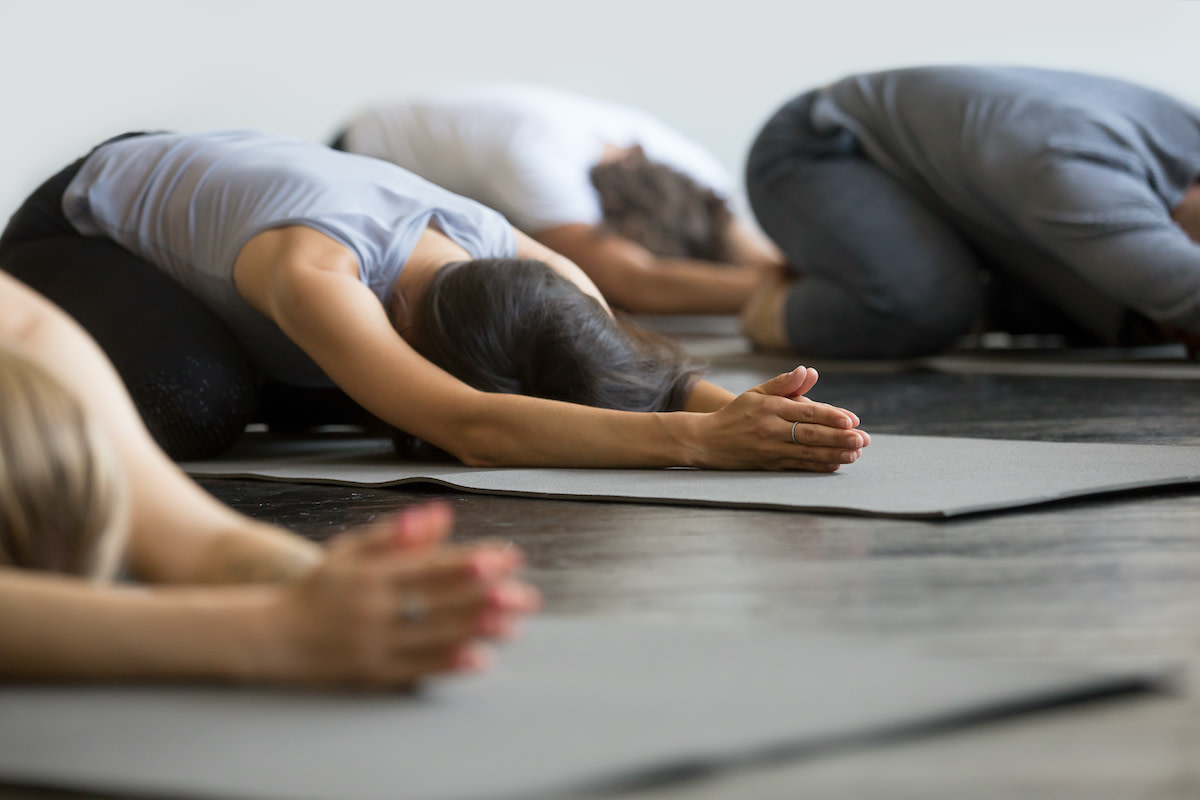Bikram Yoga Guide: 4 Tips for Practicing Bikram Yoga
Written by MasterClass
Last updated: Sep 13, 2021 • 4 min read
Hot yoga is the practice of performing yoga poses in a warm room, encouraging practitioners to sweat out negative emotions and push themselves harder during the session. Bikram yoga is a type of hot yoga that turns the heat up even hotter.
Learn From the Best
What Is Bikram Yoga?
Bikram yoga is a type of hot yoga in which practitioners perform 26 asanas (poses) and two Pranayama breathing exercises in a room heated to at least 104 degrees Fahrenheit. The Bikram method is considered the original hot yoga practice, invented in the 1970s by yoga teacher Bikram Choudhury. In Bikram yoga, the instructor serves as a meditation guide rather than a model for the various poses, guiding yogis through triangle pose, toe stand, cobra pose, tree pose, and 22 other poses throughout the 90-minute class.
What Are the Benefits of Bikram Yoga?
Here are a few of the benefits of practicing Bikram yoga:
- Low-impact. Yoga classes, in general, offer numerous physical benefits, including boosting full-body flexibility and promoting heart health. Bikram yoga is also a good low-impact exercise, meaning the slow-moving poses won’t cause extra stress to your joints like high-impact exercise. However, research indicates that practicing yoga in a hot room doesn’t boost these benefits—the exercise comes from the effort of moving into each posture rather than your elevated body temperature.
- Follows the same sequences. Attending a new yoga class can be a little intimidating since the instructor may incorporate poses or stretches unfamiliar to beginners. Traditional Bikram sessions follow the same 26 poses in every class, in the same order, often with instructors using the same (or a very similar) script. If you attend a Bikram class at a new yoga studio, you can feel comfortable because of the familiar routine.
- Offers symbolic renewal. While there aren’t any proven physical benefits to practicing yoga in a hot room, many practitioners feel a symbolic renewal after a session, allowing them to “sweat out the toxins” of a stressful day and fostering a general sense of wellness.
4 Beginner’s Tips for Practicing Bikram Yoga
Here are a few tips to help you stay healthy and enjoy yourself while practicing Bikram yoga:
- 1. Know your body’s limits. In a sweaty Bikram class, you may feel more motivated to push your body further, but avoid overdoing it. In a heated room, you may not notice muscle strain as clearly as in a traditional yoga class—and once you leave the studio and your body cools down, you may discover you’ve injured yourself. Take several regular yoga classes before you try a heated session so you have a familiar baseline for how far your body can stretch. During a Bikram session, check in with your body frequently to ensure you’re staying safe.
- 2. Wear moisture-wicking fabrics. Your body will sweat a lot during Bikram yoga, so you don’t want to be weighed down by materials, like cotton, that will absorb moisture and trap sweat. Instead, opt for moisture-wicking fabrics, like polyester or nylon.
- 3. Start slow. If you’ve never tried any form of hot yoga, you may not want to jump right into Bikram yoga, which can feel more intense because of the hotter room and demanding asanas. Instead, consider a hot yoga class for beginners first to see if you enjoy the hot yoga experience before trying Bikram.
- 4. Hydrate. Since you sweat a lot in a Bikram yoga class, drink water before and after the session to avoid dehydration. Try to drink at least six cups of water throughout the day before a Bikram session, but avoid drinking too much water right before you begin the class—a belly full of water can make you feel bloated or even nauseated while exercising. During a Bikram yoga session, feel free to keep a water bottle next to your yoga mat and sip water as needed to maintain proper hydration.
What Are the Differences Between Bikram Yoga and Hot Yoga?
While Bikram yoga is a type of hot yoga, not all hot yoga is Bikram yoga. Here are the key differences:
- Sequences: For traditional Bikram yoga, practitioners move through a series of 26 poses and two breathing exercises in a choreographed 90-minute class. In contrast, a general hot yoga class can incorporate any number of yoga poses, stretches, or exercises, often a flowing Vinyasa-style practice.
- Environment: A traditional Bikram studio has a very particular environment that it prescribes for its practice—the room should be at least 104 degrees Fahrenheit and carpeted (so it’s easier on the joints). These environmental requirements are a bit more strict than most hot yoga rooms, which often opt for temperatures as low as 80 degrees Fahrenheit and almost always use solid flooring to avoid smell absorption.
- Instructor’s role: In a traditional Bikram yoga class, the instructor’s role is that of a meditation guide; they usually stay at the front of the class and walk students through the poses using audio cues rather than performing the poses themselves. In most general hot yoga classes, yoga instructors are much more involved, modeling various yoga postures for students and helping individual students adjust their poses.
Want to Learn Even More About Cultivating a Mindfulness Practice?
Find something comfortable to sit or lie on, grab a MasterClass Annual Membership, and dial into the present moment with Jon Kabat-Zinn, the father of the Western mindfulness movement. From formal meditation exercises to examinations of the science behind mindfulness, Jon will prepare you for the most important practice of them all: life itself.
